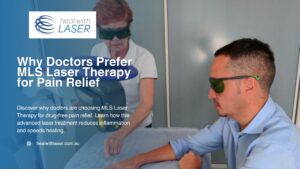In the world of sports, an athlete’s feet are their foundation. The health and functionality of an athlete’s feet not only influence their performance but also their overall physical well-being. This is where the role of podiatry in sports medicine becomes crucial. Podiatrists specialize in the diagnosis, treatment, and prevention of foot and ankle disorders, playing a pivotal role in keeping athletes at the top of their game.
The Importance of Foot Health in Athletics
Athletes put tremendous pressure on their feet and ankles. High-impact activities, repetitive motions, and intense training can all lead to a range of foot-related issues. From blisters to more severe conditions like fractures or Achilles tendonitis, the spectrum of potential problems is wide. It’s essential for athletes to maintain optimal foot health to perform effectively, avoid injuries, and ensure a quick recovery when injuries do occur.
Common Foot and Ankle Injuries in Sports
Dr Angelo Velho from AppliedMotion Sports Podiatry Clinic https://appliedmotion.com.au/podiatry-perth-cbd/ explains that sports podiatry is pretty complex as the injuries athletes vary depending on what they specialise in. Each sport has its unique risk profile; for example, basketball players are prone to ankle sprains, while runners might suffer more from issues like shin splints or plantar fasciitis. Sports podiatry deals with a variety of foot and ankle injuries. These include acute injuries like ankle sprains, fractures, and tendon ruptures, as well as overuse injuries such as plantar fasciitis, stress fractures, and Achilles tendonitis.

Diagnosis and Treatment
A sports podiatrist plays a crucial role in accurately diagnosing and treating these conditions. Diagnosis often involves a thorough physical examination, along with the use of imaging techniques like X-rays, MRI, or ultrasound. Treatment plans are tailored to the individual athlete, taking into account the specific demands of their sport and their unique biomechanical makeup.
Non-surgical Treatments
Many foot and ankle injuries can be managed without surgery. Treatment may include rest, ice, compression, and elevation (RICE), physical therapy, orthotics, and in some cases, medication to manage pain and inflammation. Custom orthotics are particularly beneficial, as they provide support and alignment specific to the athlete’s foot structure and the requirements of their sport.
Surgical Interventions
In cases where non-surgical treatments are not effective, or the injury is severe, surgery might be necessary. Sports podiatrists can perform surgeries to repair damaged ligaments, tendons, or bones. Post-surgical rehabilitation is a critical aspect of treatment, ensuring a safe and effective return to sport.
Prevention and Performance Enhancement
Beyond treating injuries, sports podiatry is heavily involved in injury prevention and performance enhancement. Through biomechanical analysis, podiatrists can identify potential risk factors for injury specific to the athlete’s foot type and gait pattern.
Footwear Advice

One significant aspect of prevention is advising on appropriate footwear. The right type of shoe can make a substantial difference in preventing injuries and enhancing performance. Sports podiatrists provide guidance on the best shoes for each sport and the individual needs of the athlete, considering factors like arch type, pronation, and the surface the athlete performs on.
Custom Orthotics and Insoles
Custom orthotics and insoles are often used to correct biomechanical imbalances, provide support, and distribute pressure more evenly across the foot. These devices are tailored to the athlete’s feet, ensuring they fit perfectly with their sports shoes and the demands of their specific sporting activities.
Rehabilitation and Return to Sport
Following an injury, the goal of sports podiatry extends beyond just healing. It includes a comprehensive rehabilitation plan aimed at safely returning the athlete to their sport at the same, if not a higher, level of performance. This involves not only physical rehabilitation but also guidance on gradually resuming training, techniques to avoid re-injury, and conditioning exercises to strengthen the foot and ankle.

The Multidisciplinary Approach in Sports Medicine
Podiatry is often integrated into a multidisciplinary approach in sports medicine. Collaboration with other healthcare professionals like physiotherapists, sports medicine doctors, and orthopedic surgeons ensures a holistic approach to the athlete’s health and performance. This team effort is vital in developing comprehensive treatment and prevention strategies.
Conclusion
In the realm of sports medicine, podiatry is indispensable in keeping athletes on their feet and performing at their best. From diagnosis and treatment to injury prevention and performance enhancement, sports podiatrists provide essential care. Their expertise in the mechanics and pathologies of the foot and ankle makes them a crucial part of any athlete’s healthcare team. For athletes at all levels, maintaining foot health is not just about staying in the game; it’s about excelling in it.





